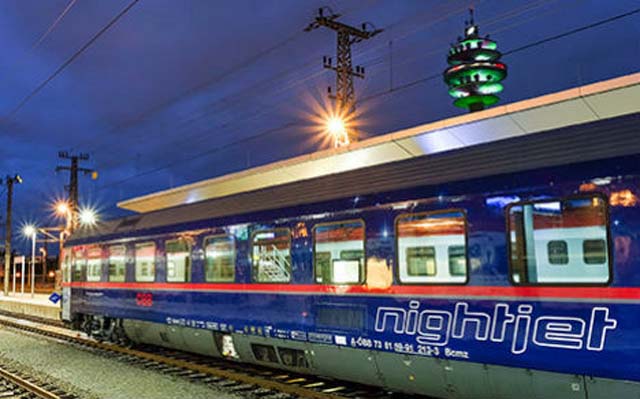

in Sleeper Trains
Vienna Austria - Germany's Deutsche Bahn (DB) is scrapping its sleeper trains but it's not quite the end of the line for fans of night-time journeys, thanks to a deal announced with Austrian Railways (ÖBB) on Friday.
The German state rail operator has long sought to rid itself of its loss-making City Night Line services as travellers increasingly opt for short-haul flights to cover distances that would take many hours by train.
With the romantic idea of going to sleep in one country and waking up in another losing its appeal, rail companies across Europe have been scaling back or phasing out their overnight services in recent years.
But ÖBB which believes there's still money to be made with sleeper berths, is bucking the trend.
It announced that it would spend €40 million on buying and renovating 42 sleeper trains from DB, which have beds, and 15 couchette trains, where seats can be converted into bunks.
ÖBB said the deal would allow it to expand its Nightjet network in Germany and offer six new routes from 11 Dec 2016, including Hamburg to Zurich, and Munich to Rome via Salzburg.
But the number of sleeper trains running in Germany will still only be around half of what DB had offered.
"It's clear that night trains are a niche sector but this is a strong offer for certain target groups", ÖBB chief Andreas Matthae said at a press conference in a nod to environmentally conscious travellers and families.
Different Travel Needs
The Austrian rail operator said its overnight services account for some 17 percent of long-distance revenues.
With its network expansion, it hopes to attract an extra 1.8 million Nightjet travellers over the next three years, on top of the one million annual passengers it already has.
DB for its part said it would focus on introducing more long distance late-night services using its inter-city and high-speed trains, although passengers won't be able to lie down.
To make the journey more comfortable, the operator said lights would be dimmed and announcements kept to a minimum.
The cheaper, no-frills service, is aimed at luring passengers away from long-distance bus routes.
"There will continue to be an attractive range of night-time travel options in Germany," DB's Berthold Huber said in a statement, adding that the two companies were responding to "different travel needs".
Despite booking its first loss in 12 years in 2015, DB is planning massive investments to improve the quality of its service and modernize its ageing infrastructure.
Wake Up Fully Rested
Environmental campaigners and rail passenger groups have watched in dismay as European operators have one by one reduced their overnight offerings in the face of fierce competition from airlines and bus companies.
In France, the state-owned SNCF cut four night routes this month alone while two others, the Paris-Nice line, and Paris to Irun in Spain, are to be scrapped next year.
A lack of profitability and passenger demand has seen Spain axe nearly all its night train services, including the Paris-Madrid route.
In Britain, the only moonlight rail journeys left are London to Scotland and London to Cornwall.
The German rail passenger association Pro Bahn on Friday said it welcomed ÖBB's partial rescue of Germany's sleepers, and stressed the benefits of night-time train travel.
"To board in the evening and wake up at your destination in the morning fully rested is something you can only get on classic night trains, where travellers can actually lie down," it said in a statement.
From 11 Dec 2016 the new night train routes will be:
- Hamburg - Berlin - Freiburg - Basel - Zürich;
- Hamburg - Munich - Innsbruck;
- Düsseldorf - Munich - Innsbruck;
- Munich - Villach - Venice;
- Munich - Salzburg - Villach - Florence - Rome;
- Munich - Salzburg - Villach - Verona - Milan.
of the Canadian Copyright Modernization Act.



